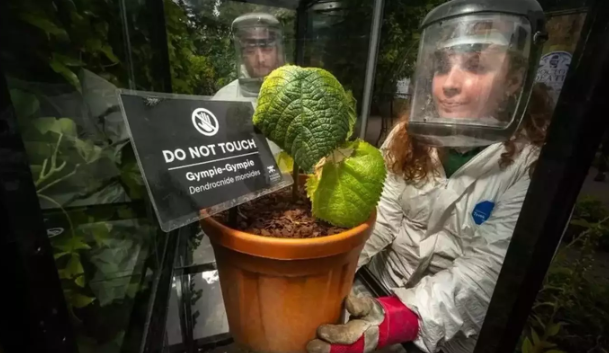Be Aware! This Is the World’s Most Dangerous Plant

© The Alnwick Garden
Did you know that there is a plant out there that can be incredibly dangerous, even deadly, if not handled correctly? This plant may seem harmless at first glance, but its toxic properties can have severe consequences if ingested or even touched. But, which plant is the world’s most dangerous plant, and what makes it so harmful?
What Is the World’s Most Dangerous Plant?
A highly toxic plant known as the Gympie-Gympie believed to be the world’s most poisonous, has been introduced to the UK. It possesses minuscule hair-like needles loaded with toxins and can reach heights of up to 10 meters. Contact with this plant can induce sensations akin to being electrocuted and set on fire simultaneously, and it’s even been associated with sparking suicidal thoughts.

In severe instances, the excruciating effects of Gympie-Gympie stings have persisted for weeks or even months. This has tragically led some victims to take their own lives due to unbearable suffering. Originating from Australia, this perilous plant, also known as Dendrocnide moroides, is now showcased at Alnwick Garden in Northumberland. It is contained within a glass enclosure and is attended to by a dedicated keeper. Alnwick Garden boasts an extensive collection of over 100 toxic and narcotic plants on exhibit.

How Is This Possible?
According to John Knox, the lead tour guide at the Poison Garden, this plant typically flowers and bears fruit when it is under three meters tall. However, it can grow as tall as 10 meters. Every part of the plant, including the stem, branches, leaves, and fruits, is covered in stinging hairs that must be avoided. These tiny hairs, called trichomes, carry potent toxins that can remain in the skin for up to a year. Triggering events such as touching the affected area, contact with water, or temperature changes can release the toxin cocktail into the body.

Last year, Daniel Emlyn-Jones, 49, cultivated a Gympie-Gympie plant at home. He placed it in a cage with a warning sign indicating its danger. He undertook this endeavor to foster an interest in unique flora and botanical specimens. Emlyn-Jones emphasized the safety precautions taken in handling the plant, aiming to avoid any misinterpretation of his actions. He cited the presence of similar plants in botanic gardens as evidence of their interest and educational value.
Disclaimer: If you or anyone you know is struggling with suicidal thoughts, help is always closer than you think. Give yourself another chance and head to your nearest suicide hotline. You are definitely not alone!
You might also want to read: The American XL Bully Will Soon Be Banned for Being Dangerous


